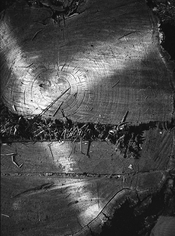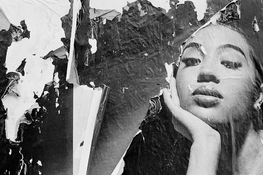paul6001
Member
- Joined
- Aug 23, 2014
- Messages
- 11
- Format
- Medium Format
Is it possible to make art by shooting someone else's art? I would argue that it is as long as you're bringing something of your own to the game. You use buildings. You use trees. You wouldn't think twice about shooting them. Why not art? Isn't art a thing? Can't I include it in my picture? Thoughts/comments/criticism?
Clearly, there's a danger of falling into mere mimicry. But I think the picture below is a pretty decent photograph. The installation is "Gray Mirrors" by Gerhard Richter. The place is the Dia Museum in Beacon, NY. The woman with the birthmark is unknown but I've done everything short of using an FBI crime lab to find her. But the mysterious guy lurking in the background, the way the iPhone resembles the mirrors, and the birthmark make it something other than Richter's work. The mirrors are his but the picture is mine.
Once I clear the "Is it art?" hurdle I still have to run through a landmine of "Is it good art or bad art?" And I certainly wouldn't want to go anywhere near a question about whether I've added to or improved on Richter, for whom I have nothing but respect. Still, I think that I've done something of merit. Something like Thomas Struth. Yes, he includes other people's art in his photographs. But they're not the point of his pictures. He brings something of his own to the game.
Richter . . . Struth . . . that's quite a crowd I run with these days. I actually have a whole series called "People And Art" with more shots like this. And I was doing it before Struth was. Or, at least, before I was aware that Struth was. Kind of a Tesla/Marconi thing. Of course, he's Thomas Struth so everyone thinks that I stole the idea from him but such is life.
I'm posting this tonight because tomorrow I'm taking my camera to the Metropolitan Museum with the intention of making art. And my plan is to inch even closer to being derivative because I don't plan to include anything but the art. I've got two ideas in mind. In the Japanese section are lots of those gorgeous ink-brushed-on-paper works. I think I can do something with them. Not sure what but something. Second, they have huge tapestries from all over that tell a story of a battle or religious scene. Twenty feet wide by ten feet high, that sort of thing. (And more up at the Cloisters.) Different characters and different actions happening all over the place. What if I made small, square close-ups of different parts of the tapestry and strung it together like a comic book?
It's just an idea. Obviously, it's all in the execution. But is it a legitimate goal? And not in a Duchamp, "it's art if I say it is" kind of way. I mean in a way that Hilton Kramer (or whoever the leading conservative critic is these days) would give his/her stamp of approval. I'm not conservative in any way that I can think of but art criticism can be so far out that I think it lacks common sense.

Clearly, there's a danger of falling into mere mimicry. But I think the picture below is a pretty decent photograph. The installation is "Gray Mirrors" by Gerhard Richter. The place is the Dia Museum in Beacon, NY. The woman with the birthmark is unknown but I've done everything short of using an FBI crime lab to find her. But the mysterious guy lurking in the background, the way the iPhone resembles the mirrors, and the birthmark make it something other than Richter's work. The mirrors are his but the picture is mine.
Once I clear the "Is it art?" hurdle I still have to run through a landmine of "Is it good art or bad art?" And I certainly wouldn't want to go anywhere near a question about whether I've added to or improved on Richter, for whom I have nothing but respect. Still, I think that I've done something of merit. Something like Thomas Struth. Yes, he includes other people's art in his photographs. But they're not the point of his pictures. He brings something of his own to the game.
Richter . . . Struth . . . that's quite a crowd I run with these days. I actually have a whole series called "People And Art" with more shots like this. And I was doing it before Struth was. Or, at least, before I was aware that Struth was. Kind of a Tesla/Marconi thing. Of course, he's Thomas Struth so everyone thinks that I stole the idea from him but such is life.
I'm posting this tonight because tomorrow I'm taking my camera to the Metropolitan Museum with the intention of making art. And my plan is to inch even closer to being derivative because I don't plan to include anything but the art. I've got two ideas in mind. In the Japanese section are lots of those gorgeous ink-brushed-on-paper works. I think I can do something with them. Not sure what but something. Second, they have huge tapestries from all over that tell a story of a battle or religious scene. Twenty feet wide by ten feet high, that sort of thing. (And more up at the Cloisters.) Different characters and different actions happening all over the place. What if I made small, square close-ups of different parts of the tapestry and strung it together like a comic book?
It's just an idea. Obviously, it's all in the execution. But is it a legitimate goal? And not in a Duchamp, "it's art if I say it is" kind of way. I mean in a way that Hilton Kramer (or whoever the leading conservative critic is these days) would give his/her stamp of approval. I'm not conservative in any way that I can think of but art criticism can be so far out that I think it lacks common sense.








